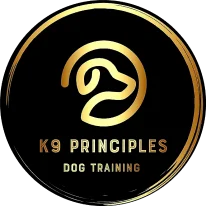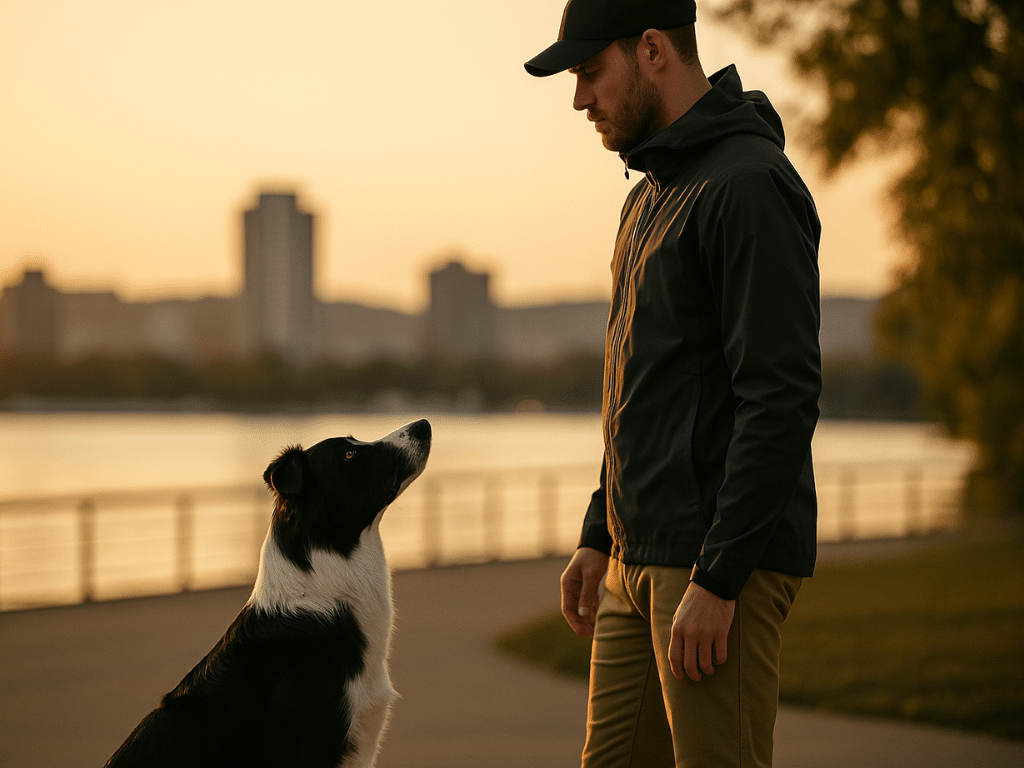Dog training isn’t an expense to “get out of the way.” It’s one of the few investments that pays you back every single day you live with your dog. For families seeking dog training in Hamilton, the right program turns everyday chaos into calm routines. When training is done well, your home becomes quieter, walks become safer, your dog’s confidence grows, and your family gains genuine freedom to enjoy life together. Across Hamilton, there are many ways to approach dog training—group classes, in-home private training, and specialty programs—and each route carries different costs and different levels of return. This guide explains what truly drives price, what realistic ranges look like locally, and how to choose the most effective path so you never pay twice for the same problem. As leaders in Hamilton dog training and trusted partners to the Hamilton/Burlington SPCA, K9 Principles brings a results-first approach that is transparent, ethical, and built around your lifestyle. Our aim is simple: deliver training that actually transfers into your everyday life.
What Actually Drives the Cost of Dog Training?
The price of dog training reflects the level of expertise you’re buying, the time required to create real behaviour change, and the degree of personalisation around your dog and household. A trainer’s background and track record matter because behaviour change is not guesswork; it’s applied learning science, precise timing, and consistent practice in the right order. When you work with an experienced, evidence-led team, you’re paying not only for the hour you see but also for the years of learning that inform every minute of that session.
Format and setting also influence cost. Group classes are efficient for foundational skills at lower complexity. In-Home Private training is tailored to your dog, your home, and your routine, which means the plan fits faster and transfers better. Specialty training—for example, agility or scent detection—requires additional expertise, equipment, and time, reflecting a higher level of value and outcome. Session length matters as well; effective lessons allow time to assess, coach, practise, and set homework you can actually execute between visits.
After-care is another cost driver that separates true programs from one-off lessons. High-quality dog trainers include ongoing support, progress check-ins, and practical homework sheets so you’re never left wondering what to do next. That support is built into the price because it is essential for results. When support is missing, owners pay with confusion, stalled progress, and the need to buy another training later. Training done right is structured, supported, and focused on transfer into the real world—the very things that make it worth the investment.
Finally, local demand and availability influence pricing. In a busy market like Hamilton—where families are active, parks are popular, and cafés welcome well-mannered dogs—trainers who deliver results invest heavily in continuing education, insurance, equipment, and real-world field locations. The price reflects that standard.
Price Ranges in Hamilton: What to Expect
When comparing dog training in Hamilton prices, remember that value depends on context. Local prices vary according to complexity, format, and trainer expertise, but you can expect typical ranges across the Greater Hamilton area. Group classes are often the most cost-effective path to build foundations like engagement, heel, sit, down, impulse control, and polite greetings. Private training sits at a premium because it happens in your environment, addresses your priorities, and solves problems that don’t fit neatly into a group room. Specialty programs and in-home packages are designed for specific outcomes such as off-leash reliability, recall under distraction, or enrichment through scent detection.
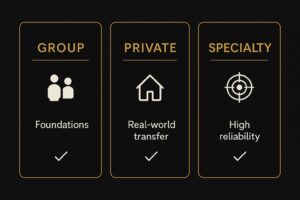
At K9 Principles, we keep pricing transparent and aligned to outcomes. Foundational group classes at the Hamilton/Burlington SPCA are intentionally accessible so more local families can get started, and half the registration fee supports the HBSPCA—training that does good for your dog and the wider community. Private programs are structured as packages that map to clear milestones, honest timelines, and realistic practice expectations. If you’d like current figures, review our latest breakdowns on our individual program pages or give us a call for a tailored quote.
What should you look for in a “fair” price? You should see: clear session lengths; a written plan; expectations for daily practice; what’s included between sessions (email/text support, video reviews); where training happens (home, neighbourhood, HBSPCA site, public locations); and how progress will be measured. Transparent scope means you can compare like-for-like and avoid surprises.
Private vs Group vs Specialty: Which Delivers Best Value?
Value is outcome divided by cost. The highest-value path is the one that solves your specific problem in the least time, with the highest degree of transfer into daily life.
Group classes provide unbeatable value for puppies and friendly adolescents who need structured foundations in a mildly distracting environment. You gain skills, social exposure, and a supportive progression path at a lower price per session. Group learning also clarifies handling skills: owners practise leash mechanics, timing, and reinforcement in a supervised setting, then take those skills home.
In-Home Private training is best value when you need targeted behaviour change or when your household has unique goals. If your dog struggles with reactivity, anxiety, door manners, jumping, or unreliable recall, a tailored plan in your home and neighbourhood saves you paying for repeat classes that never reach the real problem. Because we coach in your environment, we can adjust routines, match strategies to your dog’s drives, and practise where problems occur—on your street, in your local park, or right at the front door when the bell rings.
Specialty training becomes the smart spend once foundations are in place and your goals demand high reliability. Off-leash control requires precise engagement, a structured stimulus gradient, and systematic exposure to distractions so your dog responds first time, every time. Scent detection is a powerful outlet for mental energy and emotional regulation; many owners find that adding scent work reduces reactivity by giving the dog a job. If your lifestyle includes hiking on the Bruce Trail, visiting Bayfront Park, or relaxing at Hamilton cafés, our Master classes offer specialty training that translates your investment into real freedom.
The ROI of Training: Savings You Don’t See on the Invoice
Dog training prevents the expensive stuff you don’t plan for. A dog that chews furniture, escapes, or drags you into traffic is a financial liability and a constant stressor. Replacing a sofa or repairing a fence can cost more than a full training package; a single emergency vet visit can be far more than multiple private sessions. Liability matters as well—an out-of-control dog can create situations that are risky for you, your neighbours, and your insurance.
The less obvious savings are time and emotional wellbeing. Living with chaos is exhausting; living with calm routines is a gift. When your dog settles reliably, walks on a loose lead, and recalls on the first cue, your daily friction disappears. You’re no longer managing around your dog—you’re living with your dog. That confidence opens the door to more adventures, safer social time, and a stronger bond. The return on training keeps compounding because you benefit from it every day.
Consider “opportunity value.” Families who invest early enjoy more places together: trails, shops, patios, visits to friends. That quality time is the point of owning a dog. When behaviour gets in the way, families simply do less. The greatest ROI of training is getting your life back.
Short-Term Spend, Long-Term Gain: Why Early Training Pays Off
Early training solves two problems at once: it teaches good habits and stops bad ones from taking root. Puppies are sponges; the behaviours they rehearse in their first months become the defaults they rely on under pressure. Investing in socialisation and foundations now is always cheaper than paying for behaviour rehabilitation later.
Good puppy training isn’t “puppy chaos contained.” It’s purposeful exposure, structured play, focus under distraction, and age-appropriate impulse control. We design experiences that build resilience and optimism, preventing the common pitfalls that lead to reactivity, separation issues, or relentless pulling. The result is a dog that trusts the world, understands the rules of the game, and looks to you for guidance.
If you have a young dog and you’re choosing between “wait and see” or “start now,” choose now. Your future self will thank you. Explore current options like our Starter Program or join a class at the Hamilton/Burlington SPCA to begin the right way. If you’ve adopted an adolescent or adult dog, don’t worry—early training principles still apply. We’ll start with engagement, build your reinforcement history, and create a simple routine that reduces overwhelm and accelerates progress.
What’s Included with K9 Principles Programs
People often ask what they’re paying for beyond the hour. With our In-Home Private training, you’re investing in a complete change process that includes an initial assessment, a tailored plan, structured lessons, and clear homework that fits life in Hamilton. We coach in real-world environments—your home, local streets, parks, and pet-friendly venues—so practice looks exactly like your daily routine. Between sessions, you’ll have guidance on repetitions, duration, distance, and distractions, ensuring you progress without guessing.
Our programs map to visible milestones: settle on a mat while guests arrive; reliable heel past distractions; automatic check-ins at kerbs; recall from play; calm entry to cafés; neutral passing of other dogs. We progress difficulty with a stimulus gradient so your dog succeeds at each step before we raise the bar. Because we serve as trusted trainers for the HBSPCA and work across Hamilton, Burlington, and Haldimand County, we understand local training environments and typical challenges families face here. Visit our website to see how each path is structured.
Between-session support is a major part of our value. Expect succinct homework sheets, short video examples, and quick feedback so you can fix hiccups before they become habits. When you know exactly what to do and how long to do it, you spend less time guessing and more time progressing.
In-Home Private Training: Premium Results, Predictable Costs
In-home training accelerates transfer because we remove the biggest barrier to progress—context change. Dogs are contextual learners; what they can do in a training hall often falls apart at home because the cues, smells, and triggers are different. By training where you live, we upgrade behaviour in the exact places problems happen: at the door when the bell rings, in the yard when a squirrel appears, on your pavement when the neighbour’s dog passes.
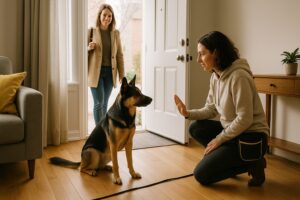
The financial advantage is predictability. Instead of paying for a long chain of generic classes, you invest in a focused package that solves your top issues and builds the routines that maintain them. We incorporate your schedule, household dynamics, and your dog’s drives so training time is spent on what moves the needle. For details on structure and availability, explore our Private Training or book a quick call and we’ll map a plan that makes sense for your goals and budget.
Common in-home goals we tackle:
- Calm, polite greetings at the door and when guests enter
- Loose-lead walking in real neighbourhood routes
- Reliable recall away from backyard distractions
- Settling during family meals, homework time, or evening telly
- De-escalating reactivity with clear management and counter-conditioning
- Building impulse control around children, toys, and food preparation
Because each outcome is rehearsed where you actually live, you see practical wins faster—and those wins stick.
Off-Leash Control & Recall: Freedom Has a Price—And a Payoff
There’s no feeling like unclipping the lead and knowing your dog will still choose you. Off-leash reliability isn’t luck; it’s a structured process built on engagement, impulse control, and a recall rehearsed under layered distraction. Achieving that standard requires targeted fieldwork and a plan that respects learning stages: acquisition at low distraction, proofing across environments, and maintenance through smart reinforcement.
Why invest here? Safety and freedom. Off-leash control protects your dog from traffic, wildlife, and confrontational encounters, while giving you the flexibility to explore trails, beaches, and parks across Hamilton. The payoff shows up in mental health too. Confident, reliable dogs get more exercise and richer experiences, reducing boredom and frustration that fuel unwanted behaviour. Our dedicated recall and off-leash pathways are outlined at Off-Leash Control; if this is your dream outcome, we’ll show you the fastest, safest route to reach it.
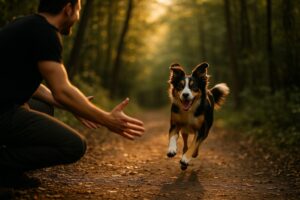
What the process includes:
- A recall cue your dog values more than the distraction
- Games that build automatic check-ins and handler focus
- Gradual distance increases with line management and safe setups
- Environmental proofing across different parks and open spaces
- A maintenance plan that keeps reliability high with minimal effort
When recall is reliable, your dog’s world expands—and your stress drops.
The Hidden Costs of “Doing Nothing”
It’s tempting to postpone training because life is busy. Unfortunately, behaviour doesn’t pause while you wait; it compounds. Pulling becomes ingrained, jumping rehearses excitement, and reactivity becomes a coping pattern. The longer a behaviour is rehearsed, the more time and money it takes to unwind. Delays also create secondary costs you might not anticipate: damaged doors, chewed furniture, neighbour complaints, or vet bills from preventable incidents. There’s an emotional cost too—tension in the home, fewer family outings, and the creeping feeling you can’t trust your dog in public.
When owners say, “We tried classes and it didn’t work,” what they usually mean is the training didn’t match their dog’s context or the program ended before proofing was complete. Doing nothing is expensive. Buying a mismatch is also expensive. Investing once in a plan that actually addresses your situation is far cheaper than paying repeatedly for partial solutions.
How to Budget for Training Without Cutting Corners
Start with clarity. Define your top three goals—perhaps calm greetings at the door, loose-lead walking in your neighbourhood, and a recall you trust at the park. Choose a program that targets those outcomes directly, in the environments you use most. If you’re balancing budget, ask about phased packages: a short private block to install foundations, followed by group classes to polish under distraction; or an in-home package now with a specialty upgrade later.
The number-one way to stretch your budget is consistency between sessions. Short, daily practice beats long, occasional bursts. We’ll give you homework windows that fit your schedule—micro-sessions in the kitchen, progressions in the yard, and then short field trips to local parks. By focusing on the highest-leverage behaviours first—settle, engagement, heel, recall—you build a toolkit that reduces ninety percent of common friction. The stronger those core skills, the less you need to spend on patching problems later.
What to Look For in a Trainer (So You Don’t Pay Twice)
Choose a trainer who can explain not just what to do but why it works. Look for a clear methodology, humane techniques, transparent progress measures, and genuine local experience. Ask how they tailor plans for different drive profiles, what their proofing process looks like, and how they support you between sessions. Beware of miraculous claims or one-size-fits-all protocols; dogs, like families, are individuals.
K9 Principles is proud to be the trusted dog trainers for the Hamilton/Burlington SPCA and a top-rated team in Haldimand County, serving Hamilton, Burlington, and beyond. Our programmes are built on learning science, patience, and real-world practice. We believe in leadership without force, structure without stress, and results that last because they live in your day-to-day routines. If you want to know who you’ll be working with and what we stand for, visit About Us and see how our approach aligns with your goals.
K9 Principles × Hamilton/Burlington SPCA: Training That Gives Back
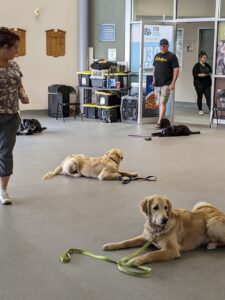
The payoff over time
In the first month, the house becomes calmer and walks become manageable. In three months, the outside world becomes predictable as your dog generalises the rules. At the six- to twelve-month mark—when you’ve maintained the routines—you enjoy a dog that responds first time in more places with less effort. Those gains don’t evaporate; they compound, because your dog’s default behaviour is now the behaviour you want.
If you’re ready to translate investment into results, give us a call today. We’ll recommend the shortest, smartest route from where you are to where you want to be, whether that’s a focused private package, a group pathway at the SPCA, or a blended plan that respects your budget and timeline.
Contact us for more information:
- Name: K9 Principles
- Address: Haldimand County, Greater Hamilton Area, Burlington, and Most of Norfolk County
- Phone: 289 880-3382
- Email: k9principlesinc@gmail.com
- Website: www.k9principles.ca
FAQs: Costs, Packages, Guarantees, and Results
-
A1. That depends on your goals and how rehearsed the current behaviour is, but we always design the shortest plan that can genuinely deliver transfer. Foundations for a friendly adolescent dog are often achieved over a focused block, while complex behaviours like reactivity or off-leash reliability require progressive proofing across environments. You’ll receive a realistic timeframe during your initial assessment so you know exactly what you’re investing in and when to expect each milestone.



